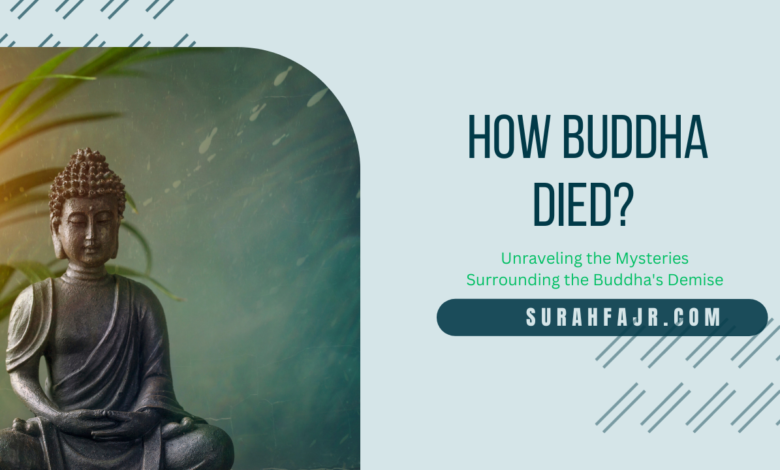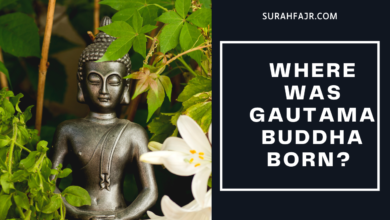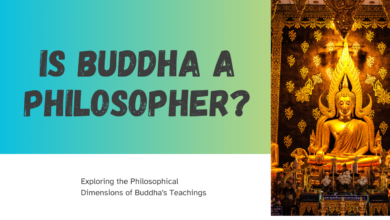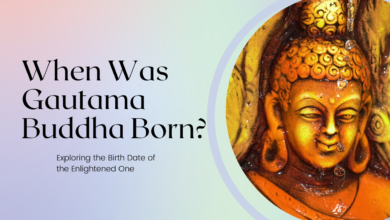
How Buddha Died?
Buddha, also known as Siddhartha Gautama, is believed to have died from natural causes. He passed away at the age of 80 in a state of deep meditation, known as “parinirvana,” under a sala tree in Kushinagar, India.

Introduction
Siddhartha Gautama, widely known as the Buddha, was the spiritual leader and founder of Buddhism. His teachings have influenced countless lives for over two and a half millennia. While his life and enlightenment under the Bodhi tree are well-documented, the details surrounding his death remain a subject of historical and religious discussion. In this article, we will explore the circumstances surrounding the death of the Buddha and the various accounts of his final moments.
The Traditional Account
The traditional account of the Buddha’s death can be found in Buddhist scriptures and traditions. It is commonly referred to as the “Parinirvana” or the final Nirvana. According to these accounts, the Buddha passed away at the age of 80 in a place called Kushinagar, in present-day Uttar Pradesh, India.
Buddha is said to have accepted an offering of a meal from a blacksmith named Cunda, which later caused him severe digestive distress. Despite the pain and discomfort, he continued to teach and comfort his followers. He encouraged them to continue their practice and not be disheartened by his imminent passing.
Lying down on his right side between two Sal trees, the Buddha entered into deep meditation and achieved the state of Nirvana. It is said that the moment he attained Parinirvana, there was a great earthquake, and the skies were filled with celestial music and divine flowers rained down. His body is said to have emitted a divine light, and his physical form began to wither away. The Buddha’s disciples, including Ananda, were in deep mourning at his passing.
Also Check
- When Was Gautama Buddha Born?
- Is Buddha Avatar Of Vishnu?
- How Many Gods Does Buddhism Have?
- What Is Dussehra?
- Where Is Buddhism Most Practiced?
Alternative Accounts
While the traditional account remains the most widely accepted version of Buddha’s death, there are alternative accounts and theories that have been put forth by scholars and historians. Some suggest that the Buddha’s death may have been caused by food poisoning, while others propose that he succumbed to a more natural illness.
The Argument for Food Poisoning: Some scholars argue that the Buddha’s final meal from Cunda the blacksmith was tainted or improperly prepared, leading to severe food poisoning. This theory is rooted in the description of the Buddha’s intense physical suffering after the meal. Proponents of this view believe that food poisoning could explain his symptoms and sudden death.
The Argument for Natural Causes: On the other hand, some historians suggest that the Buddha’s death may have been due to natural causes, such as old age or an underlying health condition. Given that he was 80 years old at the time, it is reasonable to assume that he may have succumbed to the effects of aging or an ailment that was not well-documented.
Conclusion
The death of the Buddha remains a subject of deep historical and religious interest. While the traditional account of his Parinirvana is widely accepted and revered by Buddhists around the world, alternative theories about the cause of his death persist. These alternative accounts serve as a reminder that even the most revered historical figures are not immune to the scrutiny of critical analysis and historical debate.
Regardless of the exact circumstances surrounding his death, the Buddha’s teachings and legacy have continued to inspire and guide millions of people, transcending time and geography. His message of compassion, wisdom, and enlightenment remains a profound source of inspiration for people on their spiritual journeys, reminding us that the pursuit of inner peace and enlightenment is a timeless and universal quest.
(FAQs) about how Buddha died?:
(FAQs) about how Buddha died:
Buddha, also known as Siddhartha Gautama, is believed to have died from natural causes. He passed away at the age of 80 in a state of deep meditation, known as “parinirvana,” under a sala tree in Kushinagar, India.
What is “parinirvana”?
Parinirvana refers to the final and complete nirvana that occurs at the time of a Buddha’s death. It signifies the end of suffering and the cessation of the cycle of birth and death. It is a state of ultimate liberation and enlightenment.
When did Buddha die?
According to Buddhist tradition, Buddha died in 483 or 486 BCE, though there is some debate among scholars about the exact year of his passing.
Where did Buddha die?
Buddha died in Kushinagar, also known as Kusinara, a town in the Uttar Pradesh state of India. It is one of the four major pilgrimage sites for Buddhists.
What were the circumstances surrounding Buddha’s death?
According to Buddhist texts, Buddha knew that his time of passing was approaching, and he chose the place and time of his death. He had been traveling and teaching extensively before arriving in Kushinagar, where he decided to enter parinirvana.
Were there any witnesses to Buddha’s death?
According to Buddhist scriptures, a small group of disciples and followers were present at the time of Buddha’s death. They gathered around him as he entered into parinirvana, paying their respects and receiving his final teachings.
Did Buddha die in pain?
No, according to Buddhist tradition, Buddha died peacefully and without pain. He entered parinirvana in a state of deep meditation and tranquility, free from suffering.
What were Buddha’s last words?
Buddha’s last words are traditionally recorded as, “All composite things are perishable. Strive for your own liberation with diligence.” These words emphasize the impermanence of all things and the importance of individual effort in attaining liberation.
Was Buddha’s body preserved after his death?
According to some accounts, Buddha’s body was cremated, and his relics were distributed among different groups and kingdoms. Some of these relics are believed to have been enshrined in stupas and revered by Buddhists.
How is Buddha’s death commemorated in Buddhism?
Buddha’s death, or parinirvana, is commemorated by Buddhists on the day of Vesak (Buddha Purnima), which falls on the full moon day in April or May. This day is marked by meditation, prayer, and acts of kindness in memory of Buddha’s teachings and his passage into parinirvana.


